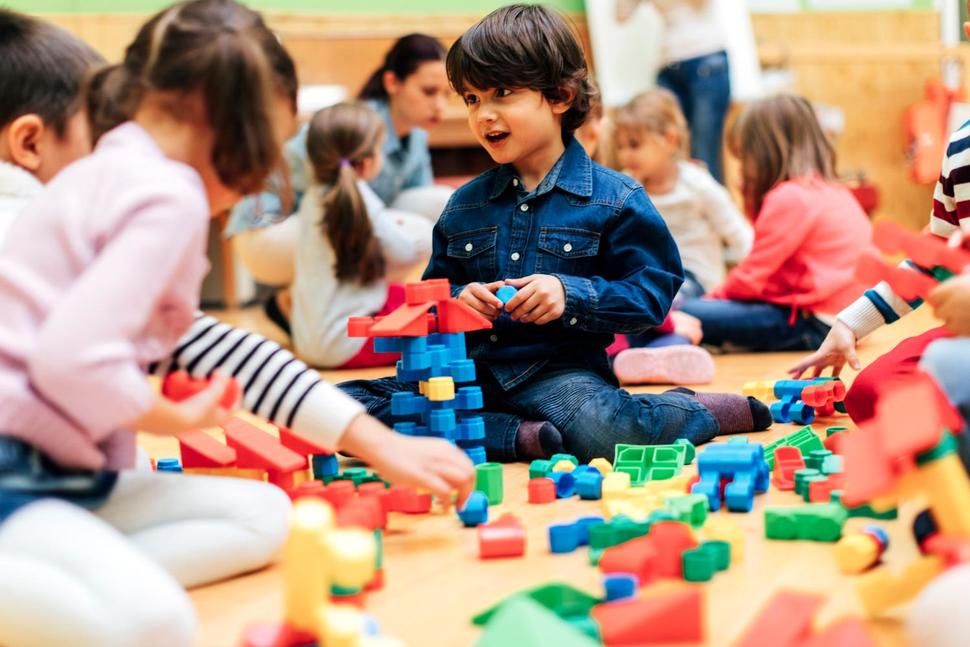Recent advice from the country’s largest advocacy group for children leaves me concerned that what I’m about to write is going to be met with poor reception. Following extensive review of more than 50 research studies, the American Academy of Pediatrics released its October 2011 Policy Statement: Media Use by Children Younger Than 2 Years. I would like to think that all parents of young children tuned in, but for those of you who missed it – here are some of the highlights.
First, let’s start with a few facts about the current state of our children’s media diet. A full 90 percent of parents report (admit?) that their children under the age of 2 watch some form of electronic media – on average consuming 1 to 2 hours of television a day. For 1 in 7 of these young children, we’re talking 2 or more hours a day of media. By age 3, nearly one-third of our nation’s youngest have televisions in their own bedrooms. While these numbers may not be entirely surprising, given the ubiquitous nature of ipads, iphones, ipods, computers, laptops and TVs, they should nevertheless be disturbing given what we know about the potential effects of screen time for babies and toddlers.
There are several important questions we all should now be asking before taking even one more baby step towards the TV set.
- Are infant- and toddler-directed programs educational?
- Is there any harm in letting babies and toddlers watch TV (and other screens)?
- What is “secondhand TV” and why should I care?
Let’s start with the question of educational value. In the words of my pediatric colleague (and the lead author of the policy statement) Dr. Ari Brown, the phrase “educational TV/videos for children under two” is an oxymoron. That’s because in order for anything to be educational, children need to “get it.” This inherently involves understanding both the content and the context. Given that young children have been shown to fundamentally lack the ability to distinguish between programs shown backwards from those shown forwards, one would be hard pressed to suggest educational benefit from watching. Sure these TV-viewing infants and toddlers laughed at viewings in both directions – suggesting some entertainment value – but entertainment does not equal education.
That’s not to say that there’s no such thing as educational television, or that educational television can’t be entertaining. Studies have actually shown proven educational benefit for children over the age of two from quality shows such as Sesame Street. It’s just that if you happen to be one of the majority of parents who have been led to believe (most likely by extensive explicit and/or implicit marketing) that TV programs and/or videos are going to enhance your baby or toddler’s intellect, you need to tune into the fact that it’s simply not.
Okay, so screen time isn’t the answer to making your baby smarter. What about those parents who readily admit they use the TV (and various other screens) as a sure-fire reprieve from entertaining their babies/toddlers just long enough to make dinner, take a shower, make a phone call….you know – all those things that just about all parents of young children struggle to find time to do in the day. I get that, and readily admit that TV did, on occasion, get used as a babysitter in my own household.
But the fact of the matter is that there are several key concerns regarding the time toddler and infants spend in front of screens, not the least of which involve language development. We already see expressive language delays in the short term. And the fact that we don’t yet know for sure about screen time’s long-term effects on language should not rule it out. In the meantime, there is a valid concern that screen time interferes with “talk time” – especially given findings such as the fact that 84 percent of parents talk less when the TV is on, and 74 percent use fewer new words. This is huge, considering that we’re talking about the most crucial time for language development.
There’s also reason to worry about the quality of sleep our children are getting. While most studies thus far have looked at media effects on older children, we know that healthy sleep habits impact just about every other aspect of all children’s health. Remember that a reported 30 percent of kids under 3 have TVs in their bedrooms. We clearly need to tune in to the possibility that their sleep may be suffering as a result.
Even during our children’s waking hours, the time that babies and toddlers spend in front of screens may simply not be time well spent. Not if it ends up displacing reading, playing, and entertaining oneself. We know that free play is hugely important for young children’s development, as are 3-dimensional, real world interactions with parents and other caregivers.
I would imagine with all of that, many of you may now be tempted to adjust your child’s media diet just a bit – and that’s great. But before you simply commit to eliminating an episode or two of toddler TV from your child’s daily viewing schedule or limit how often your baby watches his admittedly captivating video, don’t forget to take into account your own viewing schedule. That’s right – the evidence presented by the AAP is equally worthy of your attention when it comes to having your own shows on in the background. In other words, as parents we also need to take into account what is now being referred to as “secondhand TV” – an unintended exposure that is occurring in an estimated 40 to 60 percent of households across America. While parents may report “the TV is on but no-one is watching,” the fact of the matter is that someone is watching. Someone, as in our children. One study found that young children playing in a room shifted their gaze to the television that was left on in the background three times every minute!
So with that news flash, what’s a parent to do? Pediatricians fully understand that screens are everywhere, and it is entirely unrealistic to avoid exposing young children 100% of the time. But it is well worth your time to acknowledge that in many instances, there are better things for them to do to help them learn and develop. The AAP recommends the following strategies for making this happen.
- Set media limits for children under two, bearing in mind that the AAP discourages media use for this age child.
- Opt for supervised independent play rather than screen time to occupy your child when you aren’t able to sit down and actively engage in play. A simple set of nesting plastic cups on the floor can work wonders for engaging toddlers while their parents prepare dinner.
- Keep TVs out of all children’s bedrooms
- Recognize that your own media use can have a negative effect on your children. Help your child avoid secondhand TV exposure.
Originally posted on Omaha World Herald’s Live Well Nebraska





